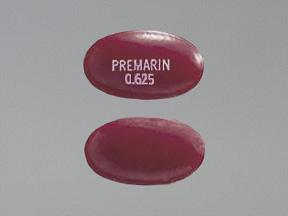 The US Preventive Services Task Force has recently reviewed the past ten years of research on the use of Pharmaceutical Hormone Therapy. The analysis, published Monday, May 28, 2012, in the Annals of Internal Medicine, combines the results of nine previous clinical trials and found that women taking synthetic estrogen or a combination of synthetic estrogen and progestin (synthetic progesterone) lowered their risk of broken bones, but increased their chances of developing a host of other complications, including breast cancer, heart disease, strokes, gallbladder disease and dementia.
The US Preventive Services Task Force has recently reviewed the past ten years of research on the use of Pharmaceutical Hormone Therapy. The analysis, published Monday, May 28, 2012, in the Annals of Internal Medicine, combines the results of nine previous clinical trials and found that women taking synthetic estrogen or a combination of synthetic estrogen and progestin (synthetic progesterone) lowered their risk of broken bones, but increased their chances of developing a host of other complications, including breast cancer, heart disease, strokes, gallbladder disease and dementia.
Taken together, synthetic estrogen and progestin increased the risk of breast cancer and dementia — although estrogen alone seemed to be associated with fewer breast cancer cases. These results may have been due to the inclusion of women who were receiving hormone therapy to replace the total loss of hormones due surgical menopause that results after removal a woman’s ovaries as part of a total hysterectomy.
Based on the new analysis, the government-backed U.S. Preventive Services Task Force (USPSTF) issued preliminary recommendations on Tuesday that postmenopausal women not use hormone therapy to prevent certain chronic conditions.
The problem with this report is that it lumps all hormone therapy together, even though the studies examined only pharmaceutical drug hormone therapy and did not include natural, Bio-Identical Hormones.
The Pharmaceutical hormone-like drugs are altered copies of a woman’s natural hormones or are manufactured from horse hormones extracted from the urine of pregnant mares.
Years ago, women were told that taking replacement hormones as they age may prevent — among other things — heart problems, dementia and osteoporosis, and the drugs were a popular treatment for hot flashes during menopause.
That changed, however, when the Women’s Health Initiative study, sponsored by the U.S. National Institutes of Health, was stopped early in 2002 when it became clear postmenopausal women taking combination hormone therapy had a higher risk of heart disease and certain cancers.
After that, the USPSTF recommended against the combined use of estrogen and progestin to prevent chronic conditions, and later did the same for estrogen alone in 2005.
Their new recommendations do not change that.
Estrogen and progestin are still taken together by some women to prevent cancer in the uterus. The U.S. Food and Drug Administration allows hormone treatment for short-term relief of symptoms of menopause, including hot flashes, and to prevent osteoporosis.
NEW LOOK AT A CONFUSING TOPIC
The lead author of the new analysis done for the USPSTF said although women have heard a lot about the possible risks and benefits of hormone therapy, there hasn’t been a clear message about hormone use.
“We looked at what we could find in this area and tried to find the most final results at this time,” said Dr. Heidi Nelson, from Oregon Health & Science University in Portland.
The new recommendations, according to the USPSTF, are based on a “moderate to high certainty that the service has no benefit or that the harms outweigh the benefits.”
Nelson and her team searched the medical literature for so-called “gold standard” studies that randomly assigned women to get synthetic drug hormone therapy or a placebo. They found nine that fit their standards and were published since 2002.
Four of the studies drew their conclusions from the two Women’s Health Initiative trials on hormone therapy, which followed over 27,000 women. In those studies, one group took estrogen, another took estrogen and progestin and the other two took placebos.
Both trials were stopped short because the increased side effects tied to the drugs outweighed their benefits.
Overall, the researchers found women taking combined progestin and synthetic estrogen and women taking synthetic estrogen alone were 25 to 30 percent less likely to break a bone during the studies compared to the women taking a placebo.
That worked out to be about five fewer broken bones per every 1,000 women annually when they were on hormone therapy.
Women taking those hormones, however, had a 34 to 79 percent higher chance of having a stroke, gallbladder disease or urinary incontinence. Both combination and estrogen-only treatment were also tied to more cases of “probable” dementia.
And the risk of invasive breast cancer was 25 percent higher in the synthetic estrogen-plus-progestin group than in the comparison group not on hormonal therapy – but 23 percent lower among those just on synthetic estrogen.
Finally, blood clots were about twice as common in women taking combined hormone therapy than in the placebo group.
“The biggest harms are still there,” said Nelson, comparing the results to earlier findings. “We’re talking about blood clots and stroke. Those things were there initially and those things have not changed.”
Still, Nelson said there is a lot about hormone therapy that is not known and a lot of information that needs to be collected.
The researchers note their conclusions are only based on a few trials, and although those trials followed a lot of women, many stopped taking the hormones during the trial. And the information is also limited to women between the ages of 60 and 69 years old.
SOURCE: bit.ly/KXHgHH Annals of Internal Medicine, online May 28, 2012.

